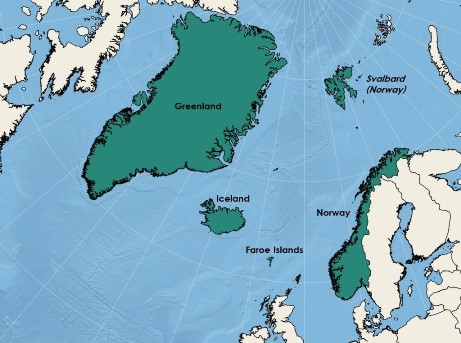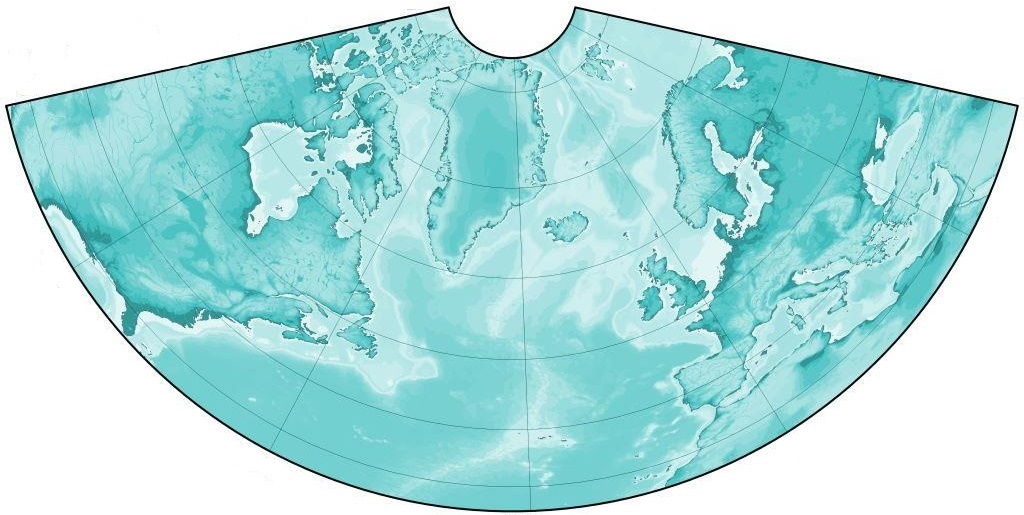
- The aim of the Commission is to promote conservation, sustainable management and study of marine mammal stocks in the North Atlantic.
- The Commission's activities are based on the Agreement between the Faroe Islands, Greenland, Iceland and Norway on Cooperation in Research, Conservation and Management of Marine Mammals in the North Atlantic signed in Nuuk in April 1992, which entered into force in July 1992. The Agreement, in turn, is built upon the Memorandum of Understanding, signed in 1990, to establish an informal North Atlantic Committee for Cooperation on Research on Marine Mammals (NAC).
- NAMMCO headquarters is in Tromsø, Norway.
- There are four NAMMCO Parties - the Faroe Islands, Greenland, Iceland and Norway. The Russian Federation has an observer status.
- The Commission works through its Council, Management Committees (Cetaceans and Seals & Walrus) and the Scientific Committee. Its structure also comprises the Committee on Hunting Methods, the Committee on Inspection and Observation, Inspection and Observation Scheme for the Hunting of Marine Mammals, Working Group on By-Catch, the Finance and Administration Committee and the Secretariat.
- The NAMMCO Agreement applies to all marine mammal species in the North Atlantic - cetaceans (baleen and toothed whales, dolphins) and pinnipeds (seals and walruses).
The Polar Branch participates in the following meetings of NAMMCO:
- annual meetings of the NAMMCO Council to address such issues as management of marine mammal stocks, hunting methods and technologies, the role of marine mammals in the ecosystem and the state of their environment, organization and joint control of whaling, seal and walrus hunting, and a wide range of research issues;
- annual meetings of the NAMMCO Scientific Committee to present national reports on marine mammal research in the North Atlantic, discuss status of cetacean and pinniped stocks and provide recommendations to the NAMMCO Council;
- joint ICES/NAFO/NAMMCO Working Group on Harp and Hooded Seals (WGHARP), which performs assessment of seal stocks, estimates permissible catch and discusses implementation of research programs.
More information can be found at: www.nammco.no/

- In 1984, the Convention established an intergovernmental organization, the North Atlantic Salmon Conservation Organization (NASCO), with headquarters in Edinburgh, Scotland.
- The objective of the Organization is to conserve, restore, enhance and rationally manage Atlantic salmon through international co-operation taking account of the best available scientific information.
- The Parties to the Convention are currently Canada, Denmark (in respect of the Faroe Islands and Greenland), the European Union, Norway, the Russian Federation, the United Kingdom and the United States of America. France (in respect of St.Pierre and Miquelon) attends NASCO meetings as an observer. Iceland withdrew from NASCO with effect from 31 December 2009 because of financial considerations.
- NASCO consists of the Council and three regional Commissions - the North American Commission, the West Greenland Commission and the North-East Atlantic Commission.
- It also comprises the Finance and Administration Committee and the Secretariat. The International Atlantic Salmon Research Board (IASRB) established by NASCO works in close cooperation with it.
- Scientific advice for NASCO is provided by the International Council for the Exploration of the Sea (ICES).
The Polar Branch participates in the following meetings of NASCO:
- annual meetings of the NASCO Council to discuss conservation of salmon stocks, their restoring, sustainable management and conservation of their environment; develop relevant advice; address issues concerning implementation of NASCO agreements and resolutions, as well as relationships with other international organizations, non-governmental organizations and the aquaculture industry; estimate negative impact on wild salmon stocks etc.;
- annual meetings of the North-East Atlantic Commission, which adopts regulatory measures for Atlantic salmon in the Faroese Fishing Zone, negotiates joint actions of the Parties to conserve wild salmon stocks in the NASCO area and their protection from adverse effects, including diseases and parasites, etc. In the framework of the Commission the Russian Federation also conducts consultations with Norway concerning cooperation on issues relating to Norwegian coastal fisheries of wild Atlantic salmon originating from Russian rivers;
- meetings of the International Atlantic Salmon Research Board (IASRB);
- NASCO Working Groups.
The Polar Branch carries out state monitoring and assessment of wild Atlantic salmon stocks in the rivers of the North European part of Russia, comprehensive research of Atlantic salmon in the rivers of the Kola Peninsula, the Arkhangelsk Region, the Republic of Karelia, the Nenets Autonomous District and the Komi Republic. The main objective of these studies is to provide scientific basis for conservation and sustainable harvesting of salmon stocks originating from Russian rivers, which have a high level of genetic purity and rank second by abundance in the Northeast Atlantic area after Norway’s salmon stocks. The Polar Branch participates in the ICES Working Group on North Atlantic Salmon (WGNAS), which develops scientific advice for NASCO.
NASCO Guidelines and Resolutions:
- The Williamsburg Resolution
- NASCO Guidelines for the Management of Salmon Fisheries
- NASCO Guidelines for the Protection, Restoration and Enhancement of Atlantic Salmon Habitat
More information can be found at: www.nasco.int

Source: website https://www.nafo.int/
- Founded in 1979 as a successor to ICNAF (International Commission of the Northwest Atlantic Fisheries) (1949-1978).
- The Convention on Future Multilateral Cooperation in the Northwest Atlantic Fisheries came into force on 1 January 1979.
- The headquarters of NAFO is in Halifax, Canada.
- The NAFO Contracting Parties are: Canada, Cuba, Denmark (in respect of the Faroe Islands and Greenland), European Union (EU), France (in respect of St. Pierre and Miquelon), Iceland, Japan, Norway, Republic of Korea, Russian Federation, Ukraine and the United States of America.
- NAFO has the following structure: the Commission, Scientific Council and Secretariat. There are subsidiary bodies and working groups to address specific issues in a more detailed way. The subsidiary bodies of the Commission are as follows: Standing Committee on International Control (STACTIC) and Standing Committee on Finance and Administration (STACFAD). STACTIC addresses matters relating to control of fishing activities in the NAFO Regulatory Area. The NAFO Conservation and Enforcement Measures updated annually contain measures to regulate and control fisheries in the NAFO Regulatory Area.
- NAFO regulates fisheries for the following key species: cod, Greenland halibut, redfish, witch flounder, skates, white hake, shrimp, squid.
The Polar Branch participates in:
- annual meetings of NAFO Scientific Council, which evaluates the status of stocks and provides advice to the Commission on conservation and management measures for the stocks;
- annual meetings of NAFO Commission, which establishes conservation and management measures for various stocks for the following year, including total allowable catches (TACs), technical measures to regulate fisheries, fishing efforts, etc.;
- meetings of various NAFO working groups.
More information can be found at: https://www.nafo.int/

